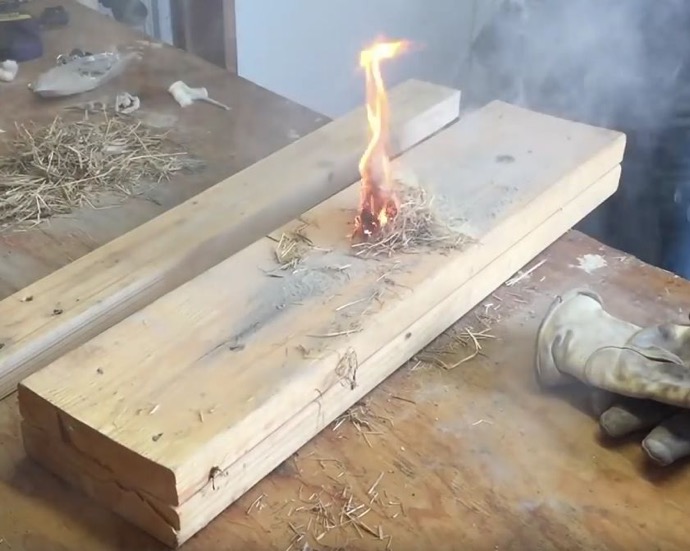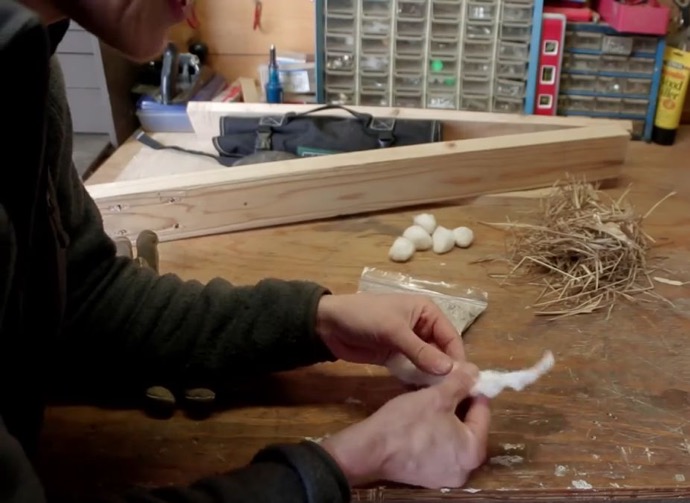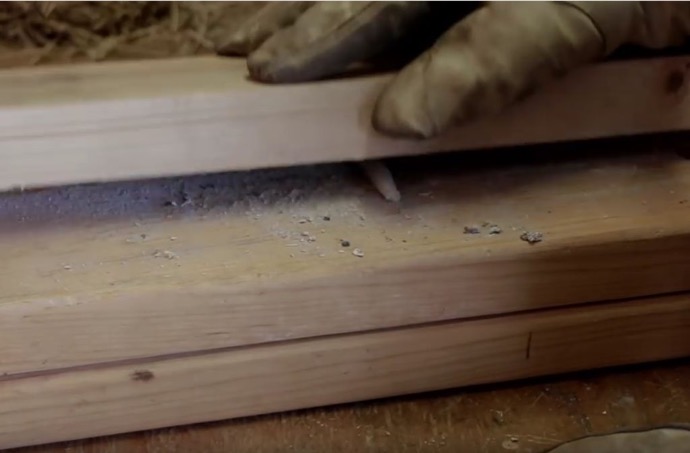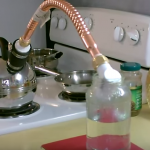How to Start a Fire With a Cotton Ball and a Piece of Wood
Fire starting doesn’t need to be an exhausting process that leaves hands blistered and arms tired. There is a new trick that recently came to our attention, and we’re passing it along to you. While some of you may already know about it, it’s worth posting in order to help those who don’t. Take a look at the simple process below and see why this method can be ideal under the right conditions.
Required Material
All you need for this trick is a couple of pieces of wood. 2×4’s work perfectly as they have enough heft that will create friction without the need to exert a lot of energy. However, you can improvise and use what’s available as well. You also need some cotton balls along with a bit of wood ash and good tinder material. If you can bundle or make a wad out of the tinder, it will make it easier to ignite later on.
Getting Started
The first step is to take your cotton ball, unroll or stretch it out so that its as flat and big as possible. Carefully tear the cotton so that it splits in half but doesn’t separate. Next, take your wood ash and sprinkle it in the center of the tear as well as along the surface of the cotton ball. You don’t need to completely cover the cotton in order for this trick to work, and it may take a little bit of trial and error to determine the right amount of ash to produce the ideal conditions for ignition later on.
The next step is to take the cotton and roll it up so that it looks almost like a cylinder. Use your hands or roll it atop a hard surface. It should become enlarged as it rolls up, and keep rolling until it becomes dense but still a bit fluffy. Again, this will take a little bit of trial and error until you get a feel for the ideal consistency of the cotton for starting the fire. Cotton that is too loose will disintegrate as you put pressure on it. Cotton that is too tight may not ignite.
Starting the Fire
The trick is to sandwich the cotton between two pieces of wood and use friction to start the fire. Sprinkle some wood ash on the bottom piece before laying down the piece of cotton. Make sure that the cotton piece is perpendicular to the direction of the wood so that it rolls a bit as you exert pressure. The secret to this method lies in the amount of pressure vs speed that you apply to the cotton. This also will take a little bit of practice as you get a feel for the right balance. The aim is to see the cotton start to smoke after a few passes as you slide the top piece along the bottom one.
Once the cotton starts to smoke, push with longer, firmer strokes so that the heated material will catch more of the wood ash and create even more friction. You may need to stop and fluff up the cotton a bit by pulling on the ends of the material from between the two pieces of wood. Do not separate the wood. You can also lightly blow on the smoking cotton to increase oxygen levels and promote smoldering. Keep in mind that if you blow too hard, you can extinguish the budding fire. If you don’t blow hard enough, it won’t ignite. Again, practice makes perfect.
Keep rolling the cotton, blowing and fluffing until the cotton ignites and starts to burn. Once this happens, remove the top piece of wood and carefully place the tinder material directly above the cotton. Make sure that the material is not too dense or heavy, otherwise it can cause the fire to go out. If all goes well, the cotton will ignite the tinder and you can use this to build your fire.
Remember that the emphasis is on technique with this trick, so feel free to experiment with different ratios of wood ash to cotton to kindling. You should also try different levels of density for the cotton as well as different amounts of pressure or the length of the strokes you use as you slide the top piece of wood. Once you get it down, you should be able to use this method as long as all of the material is completely dry. Try it for yourself, and you will be glad that you’ve added this technique to your fire-starting arsenal.
















